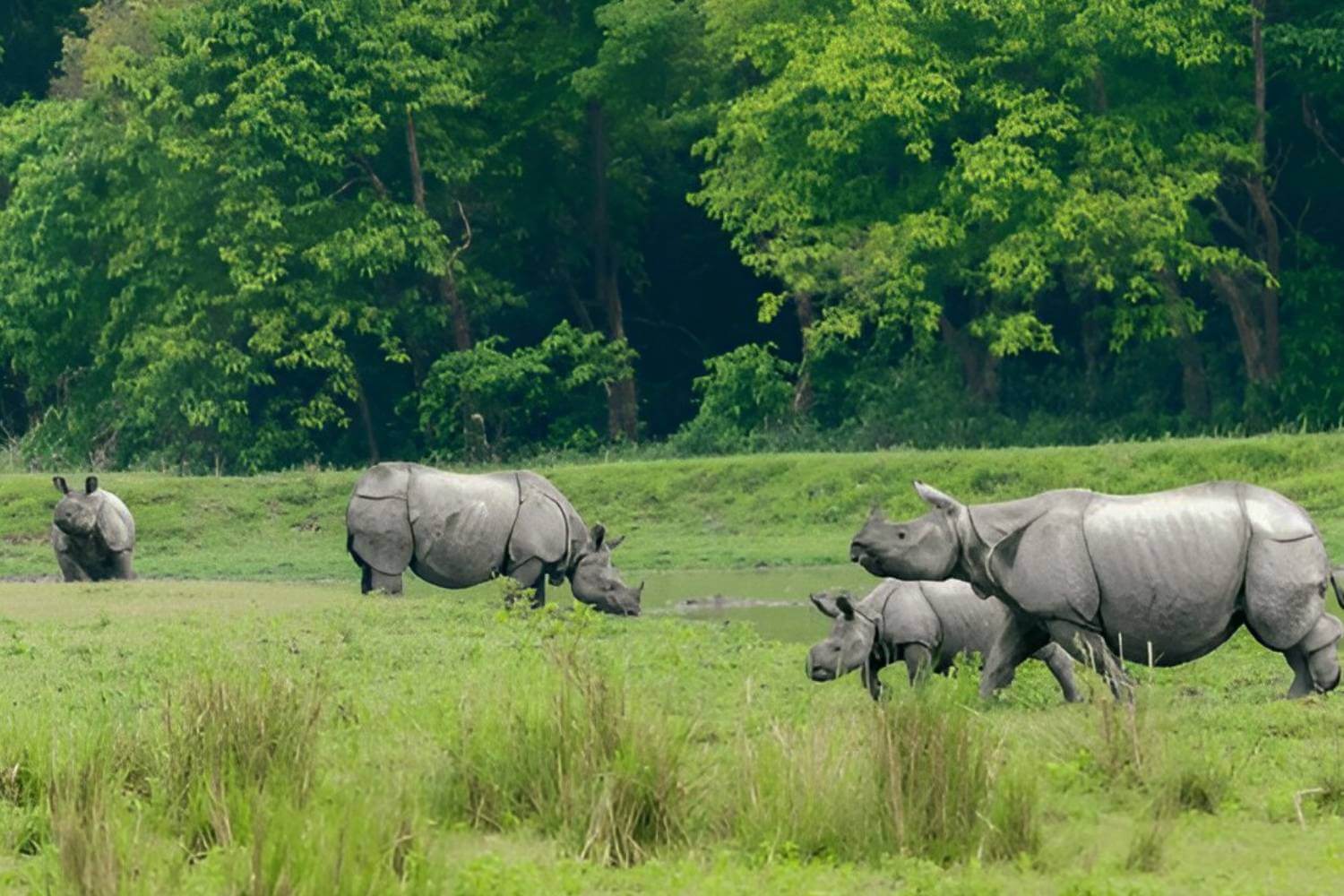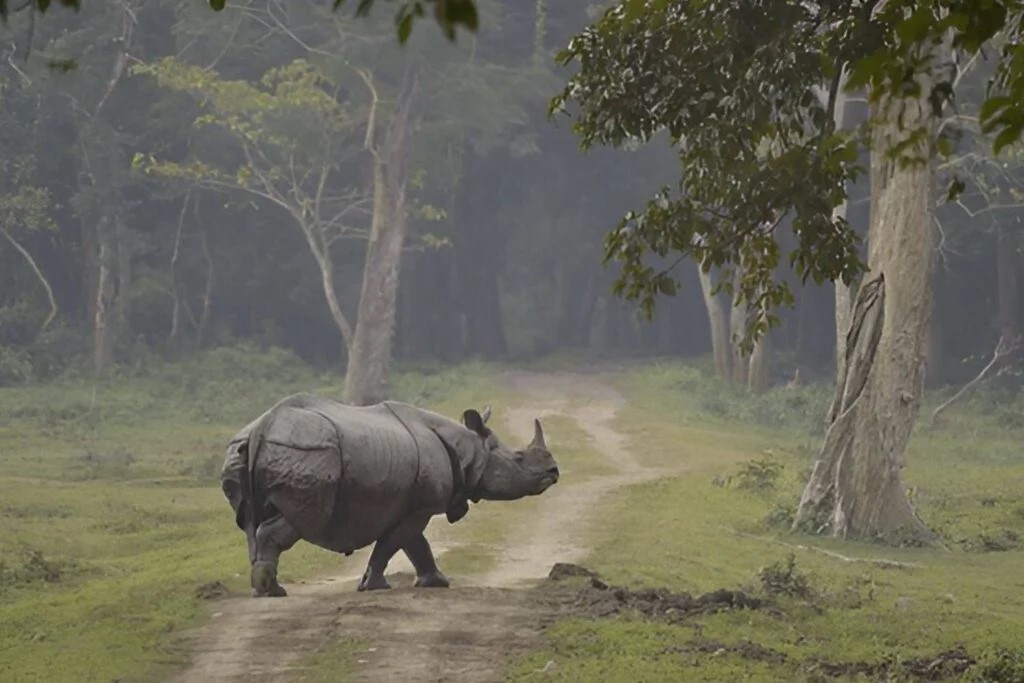World Rhino Day is dedicated to honouring the five unique species of rhinoceros while spreading awareness about the threats they face in today’s world. The five species include the Black, White, Greater One-Horned, Sumatran, and Javan rhinos. Sadly, the Black, Javan, and Sumatran rhinos are listed as critically endangered, highlighting the urgent need for their protection. While the White Rhino is listed as Near Threatened in the IUCN list, the Greater One-Horned Rhino is listed in Vulnerable status in the IUCN Red List.
Currently, the Greater One-Horned Rhino is found in India and Nepal and has a population of around 4075 worldwide.

Source: kaziranga-national-park
In this article, we will explore the major Rhino parks in India and their current population in each park.
List of Rhino Parks with their Current Population in India
| National Park / Sanctuary | Location (State) | Rhino Population |
| Kaziranga National Park | Assam | 2,613 |
| Orang National Park | Assam | 125 |
| Pobitora Wildlife Sanctuary | Assam | 107 |
| Manas National Park | Assam | 40 |
| Jaldapara National Park | West Bengal | 287 |
| Gorumara National Park | West Bengal | 52 |
| Dudhwa National Park | Uttar Pradesh | 38 |
Data Source: rhinos.org
Which country has the most the Greater One-Horned Rhino?
It is India’s Assam, Kaziranga National Park exhibits 70% of the population of the Greater One-Horned Rhino. Kaziranga National Park, which shelters the world’s largest population of greater one-horned rhinos, has reported encouraging growth. Since 2018, the park has added around 200 new rhinos to its population, even though about 400 deaths occurred, mostly from natural causes.

Source: kaziranga-national-park
In 2023, the Indian government expanded Orang National Park by nearly 200 square kilometres, linking it with the Laokhowa and Burachapori Wildlife Sanctuaries. This move created a broader corridor for rhinos and other vulnerable species to thrive. Similar expansions have taken place in Kaziranga over the years, with an additional 919.48 square kilometres being added to the park’s area.
Alongside these efforts, the Assam government, in collaboration with conservation groups such as the International Rhino Foundation (IRF), has undertaken rhino translocation projects to provide the animals with more space to breed. To further support conservation, authorities close all rhino habitats in Assam to tourists during the breeding season.
Important facts about the Greater One-Horned Rhino
| Category | Facts |
| Biology |
|
| Common Names |
|
| Scientific Name & Origin | Rhinoceros unicornis - Greek: “rhino” = nose, “ceros” = horn.- Latin: “uni” = one, “cornis” = horn. |
| Current Numbers & Distribution | Around 4,075 in the wild. |
| Physical Characteristics – Size |
|
| Physical Characteristics – Horn | Single horn, 8–24 inches (20–61 cm) long. |
Conclusion
On the occasion of World Rhino Day, India always ahead in protecting the population of rhinos and in 5 different species of Rhinos, the Black, Javan, and Sumatran rhinos which comes under the critically endangered list, need to be care vey carefully. As India is the home of the Greater One-Horned Rhino and exhibits around 3262 numbers all over the Indian national park, Assam’s Kaziranga National Park has 2,613 numbers of rhinos. The Greater One-Horned Rhino stands as a symbol of India’s successful conservation journey. With protected habitats, population growth, and collaborative efforts, hope for this species continues to rise.
Comments
All Comments (0)
Join the conversation